How to Grow Parsley
Parsley is a versatile herb that adds flavor to various dishes and is rich in nutrients. It's a popular choice for kitchen gardens and can be grown both outdoors and indoors.
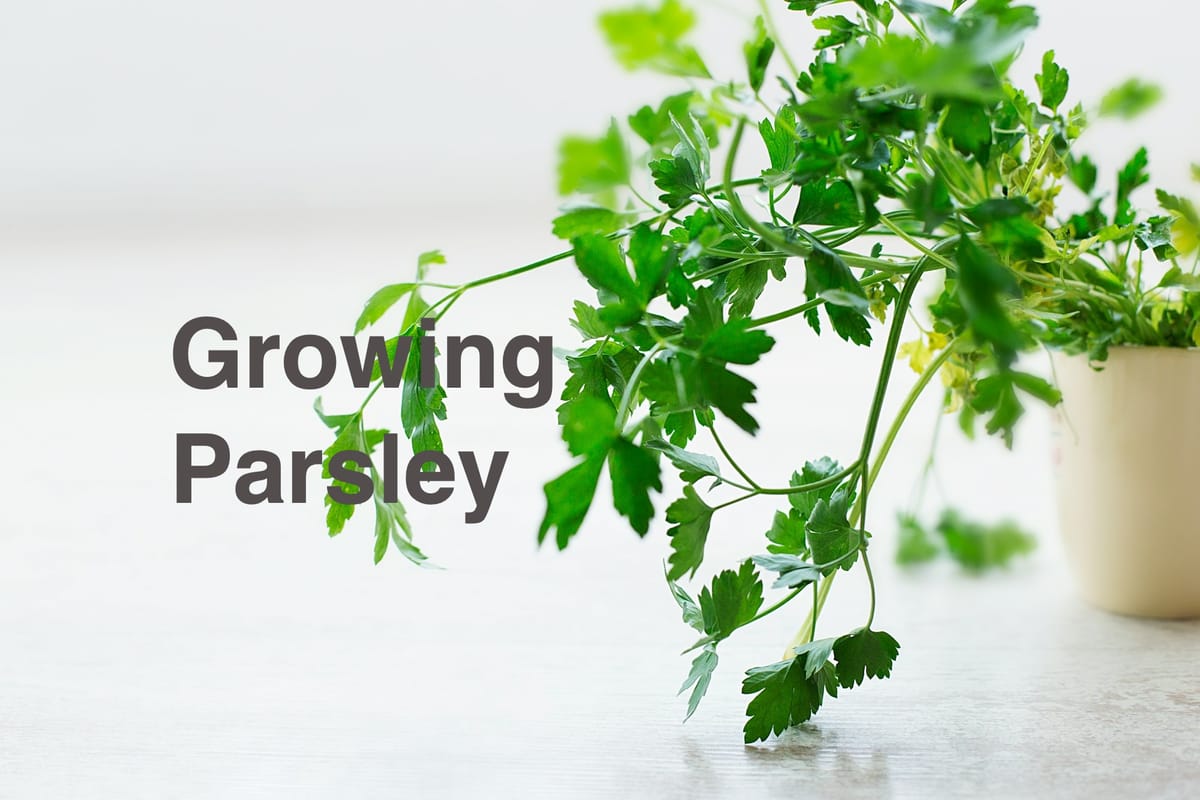
This makes it accessible for you whether you have a large garden or a small balcony.
There are two main types of parsley: flat-leaf and curly. Flat-leaf parsley is often hailed for its robust flavor, while curly parsley is used for its decorative appearance in dishes.
Both types are biennial, meaning they can live for two growing seasons. However, most gardeners grow them as annuals, harvesting them fully in their first growing season.
Before planting parsley, it's essential to choose an appropriate spot. Parsley succeeds in full to partial sunlight and prefers well-drained soil with plenty of organic matter.

It's important to consider the right time to plant. Generally, parsley seeds can be sowed directly into the soil in spring after the last frost, or started indoors 6-8 weeks before the last frost.
Parsley seeds can take a few weeks to germinate, so patience is key. Once established, parsley plants need consistent watering but take care not to overwater.
Regular trimming encourages growth and prevents the plant from becoming leggy.
Key Takeaways
- Parsley, a flavorful and nutrient-rich herb, can thrive in both gardens and pots.
- Select between flat-leaf or curly parsley and plant in a sunny spot with fertile, well-drained soil.
- Care involves patient germination, consistent watering, and regular trimming to promote a lush growth.
Choosing the Right Parsley Variety
When selecting a parsley variety to grow, you should consider taste preferences and cooking uses. Each type has distinct features and culinary uses that may guide your choice.

Flat-Leaf Parsley
Petroselinum crispum var. neapolitanum, commonly known as flat-leaf parsley or Italian parsley, features broad, flat leaves that are dark green in color. It's known for its robust flavor, which is stronger than that of its curly counterpart. Flat-leaf parsley is often the preferred choice for cooking because its flavor holds up well when heated.
- Flavor: Robust, slightly peppery
- Uses: Ideal for cooking; garnishing; used in soups, stews, and sauces
- Texture: Flat, broad leaves
Flat-leaf parsley is not only a favorite for its taste but is also relatively simple to grow. It tends to be more tolerant of both heat and cold, making it a versatile option for your garden.
Curly-Leaf Parsley
Petroselinum crispum var. crispum, better known as curly-leaf parsley or simply curly parsley, has ruffled, bright green leaves. It has a milder flavor compared to flat-leaf parsley and is frequently used as a garnish due to its decorative appearance.
- Flavor: Mild, grassy
- Uses: Primarily as a garnish; can be used in cooking but flavor is less pronounced
- Texture: Curly, ruffled leaves
Curly-leaf parsley adds a fresh appearance to dishes with its vibrant green color and intricate leaf shape. It can be a beautiful addition to your herb garden and your plate.
Pre-Planting Preparation
Before planting parsley, ensure optimal soil conditions and prepare your seeds to facilitate successful germination. Your attention to these details will create a strong foundation for healthy plant growth.
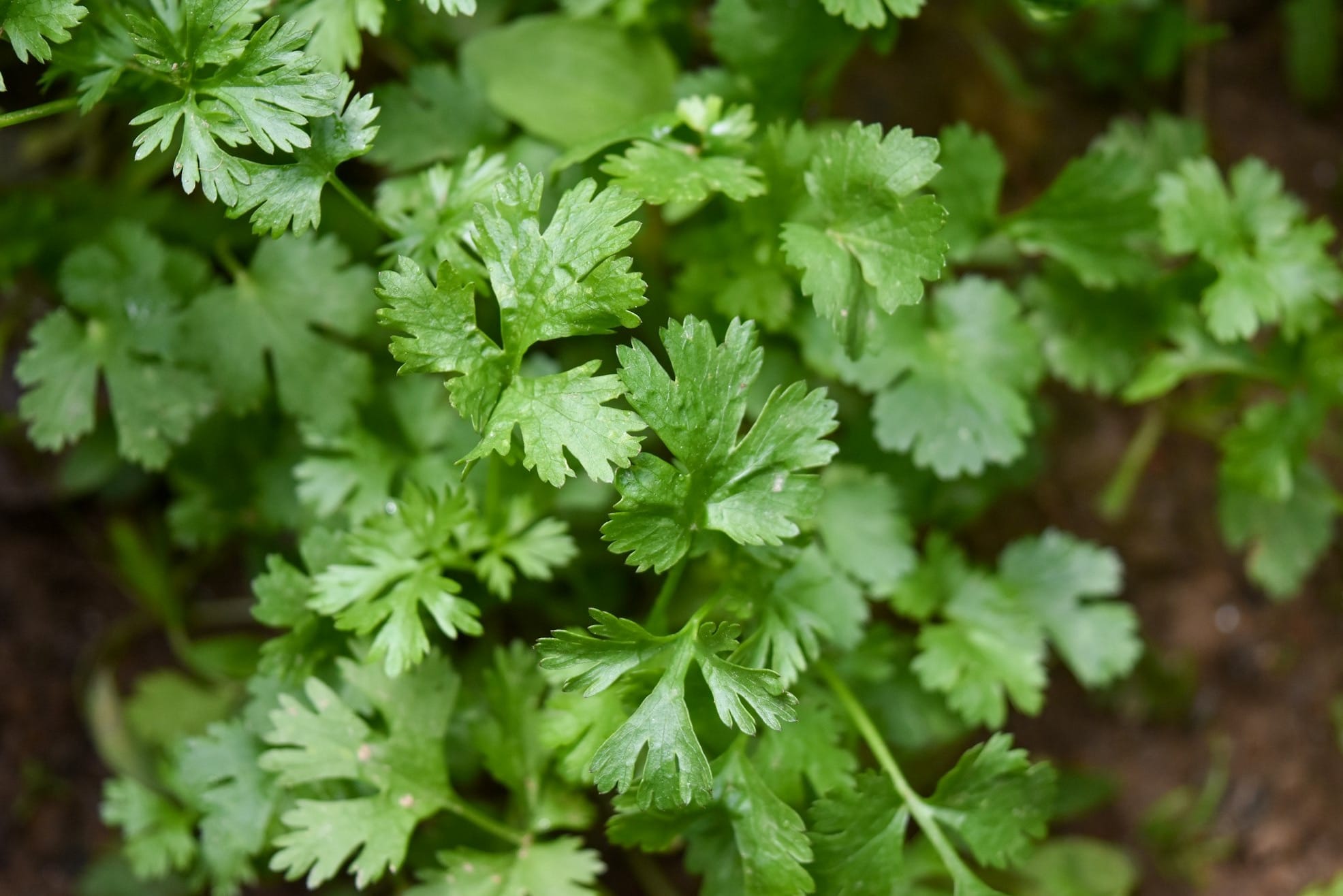
Soil Requirements
Parsley thrives in well-drained soil rich in organic matter. The soil should have a pH between 6.5 to 7.5, which is considered slightly acidic to neutral.
To test your soil's pH, use a pH meter or test kit. If needed, adjust the pH with lime to raise it, or sulfur to lower it.
For the best results, incorporate plenty of organic material into the soil, such as compost or aged manure, to improve its structure and fertility.
Parsley plants prefer a location that gets at least 5 hours of sunlight per day, so choose your planting site accordingly.
Seed Preparation
Parsley seeds have a reputation for a slow and often low germination rate. To increase the chances of your seeds sprouting, soak them in water overnight. This process softens the seed's outer layer and kickstarts germination.
After soaking, sow your parsley seeds 1/4 inch deep into the soil. Space the seeds about 6 to 8 inches apart to give each plant enough room to grow.
Keep the soil consistently moist but not soggy to encourage the seeds to germinate. Remember, patience is key, as parsley seeds can take up to 11 to 28 days to sprout.
Planting Parsley
Parsley is versatile and can thrive both indoors and outdoors with the right setup and care. Proper planting techniques are vital for healthy, leafy growth.
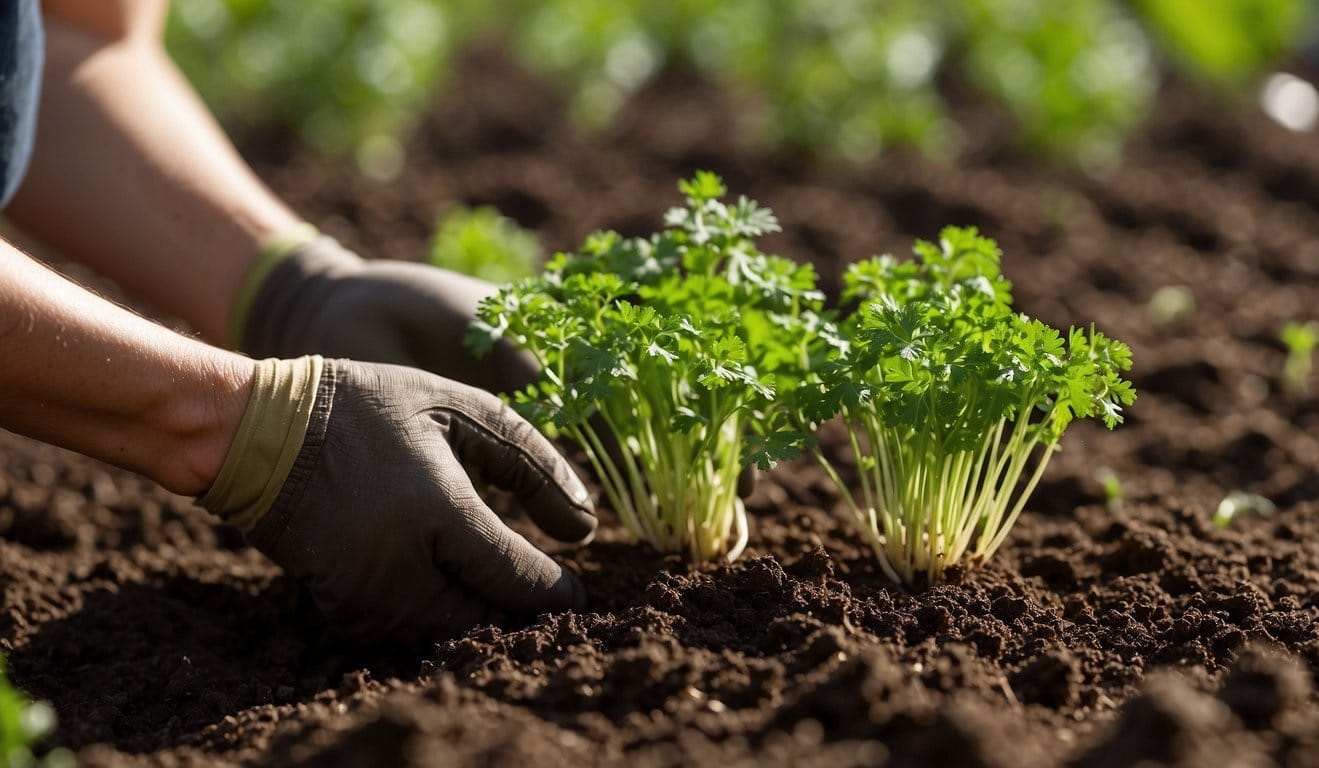
Indoor Planting
When planting parsley indoors, select a deep pot that's at least 6 inches wide.
Fill the pot with quality potting soil and sow the seeds by sprinkling them on the surface.
Cover the seeds with a thin layer of soil, approximately 1/4 inch deep.
Position the pot in an area that receives ample sunlight and where you can easily water the soil to keep it consistently moist.
- Pot Selection: Choose one with drainage holes.
- Soil: Use potting soil that drains well.
- Seed Depth: Lightly cover seeds with soil.
- Care: Keep soil moist but not waterlogged.
Outdoor Planting
If you choose to plant parsley in a garden, make sure the soil is well-worked and fertile.
Soak the seeds overnight to help with germination and plant them 1/4 inch deep.
For ideal growth, sow seeds approximately 6 to 8 inches apart. In larger gardens, 8 to 10 inches apart may be better for bigger plants.
Water regularly to maintain soil moisture without over-saturating.
- Soil Preparation: Fertile, well-drained soil.
- Seed Soaking: Overnight for better germination.
- Sowing: 1/4 inch deep.
- Spacing: 6-8 inches apart, or 8-10 inches for larger plants.
- Moisture: Regular watering to keep soil moist.
Caring for Your Parsley
Growing parsley requires attention to watering habits and vigilance against weeds and pests to ensure healthy growth.
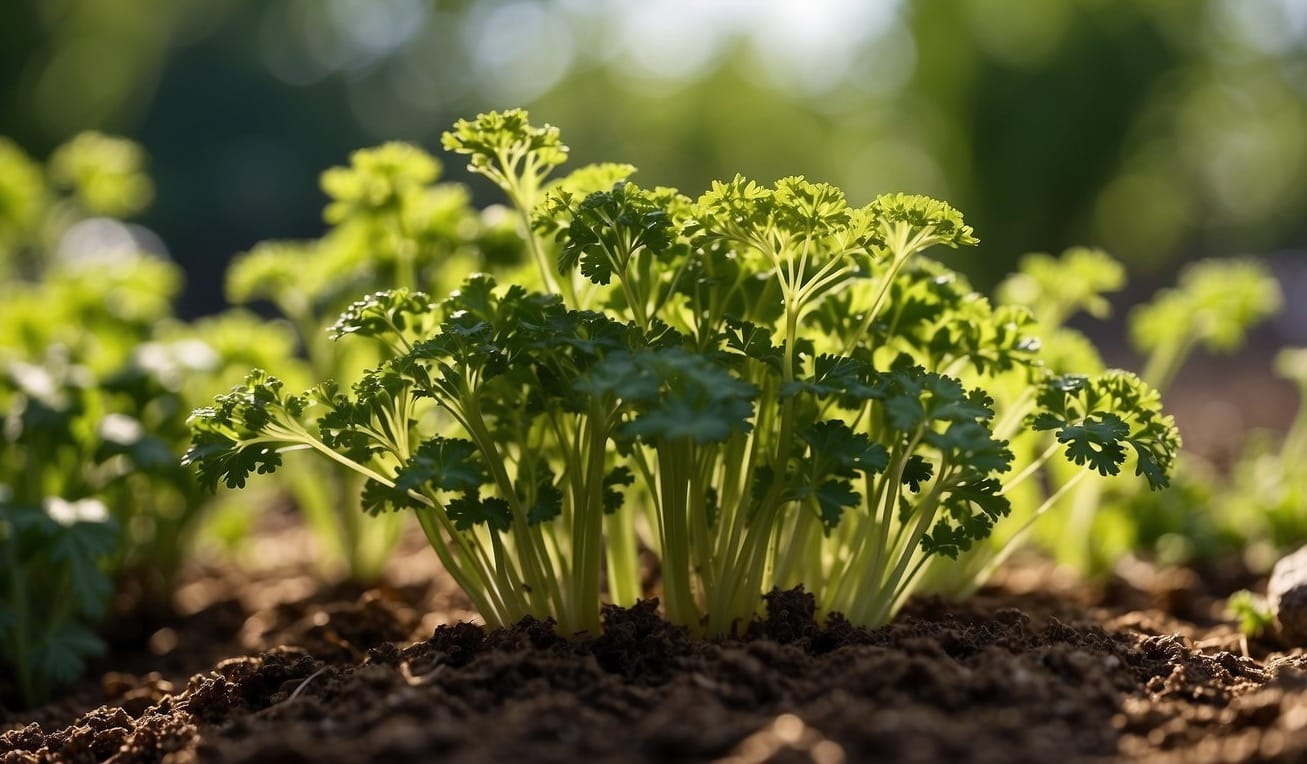
Watering and Moisture
Parsley thrives in moist soil, but it's important not to overwater.
Check the top inch of soil, and if it feels dry to the touch, give your parsley a deep watering.
Aim to keep the soil uniformly moist but not soggy. In hot weather or dry climates, you may need to water your plants more frequently to maintain the correct moisture level.
- Frequency: Water when top 1" of soil is dry.
- Amount: Water deeply, ensuring moisture reaches the roots.
- Tip: Morning is the best time to water, allowing excess to evaporate during the day.

Weed and Pest Control
Weeds compete with parsley for nutrients and space, so regularly remove weeds from around your plants.
Mulching around parsley can suppress weeds, retain soil moisture, and provide a barrier against some pests.
For pests like aphids and caterpillars:
- Inspect your parsley regularly for signs of pests.
- Remove pests by hand or with a strong water spray.
- Prevent pest infestations by keeping the area clean and removing debris where pests can breed.
Parsley Companion Planting
When you grow parsley, consider pairing it with compatible plants to enhance growth, flavor, and health in your garden. These companion plants can offer myriad benefits, from pest control to improved vitality of your parsley.
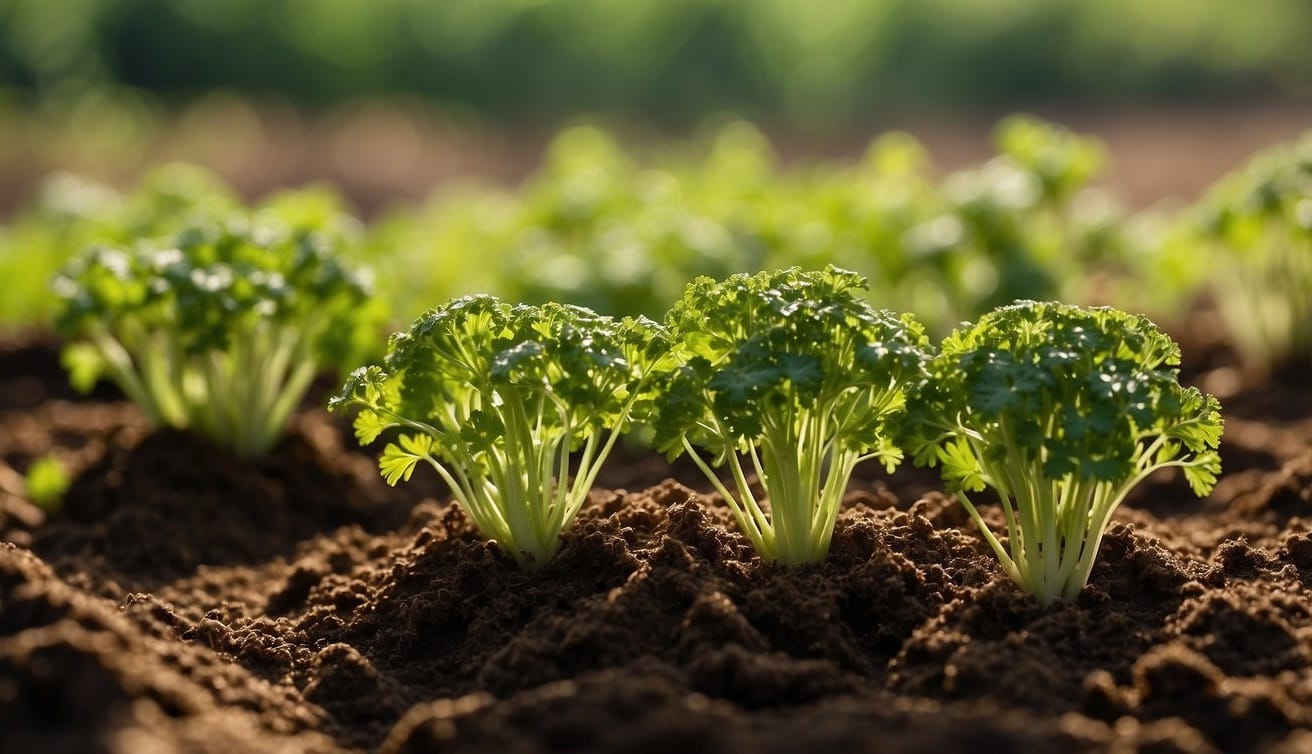
Asparagus is a standout companion, with the ability to pair nicely with parsley. Both thrive in similar conditions and can coexist happily.
Growing parsley alongside carrots is also beneficial, as these plants do not compete for resources. They can help each other stay healthy and grow stronger.
Tomatoes are excellent neighbors for parsley. By planting parsley nearby, it serves as a natural pest deterrent, drawing away unwanted insects from your juicy tomatoes.
Here is a quick list of some other good companions for parsley:
- Chives
- Peppers
- Corn
- Basil
- Beans
- Brassicas (like broccoli and cabbage)
Harvesting and Preserving Parsley
Growing parsley in your garden provides the opportunity to enjoy fresh herbs. Learn the right time and methods to harvest parsley, as well as effective ways to dry and store it to extend its use.
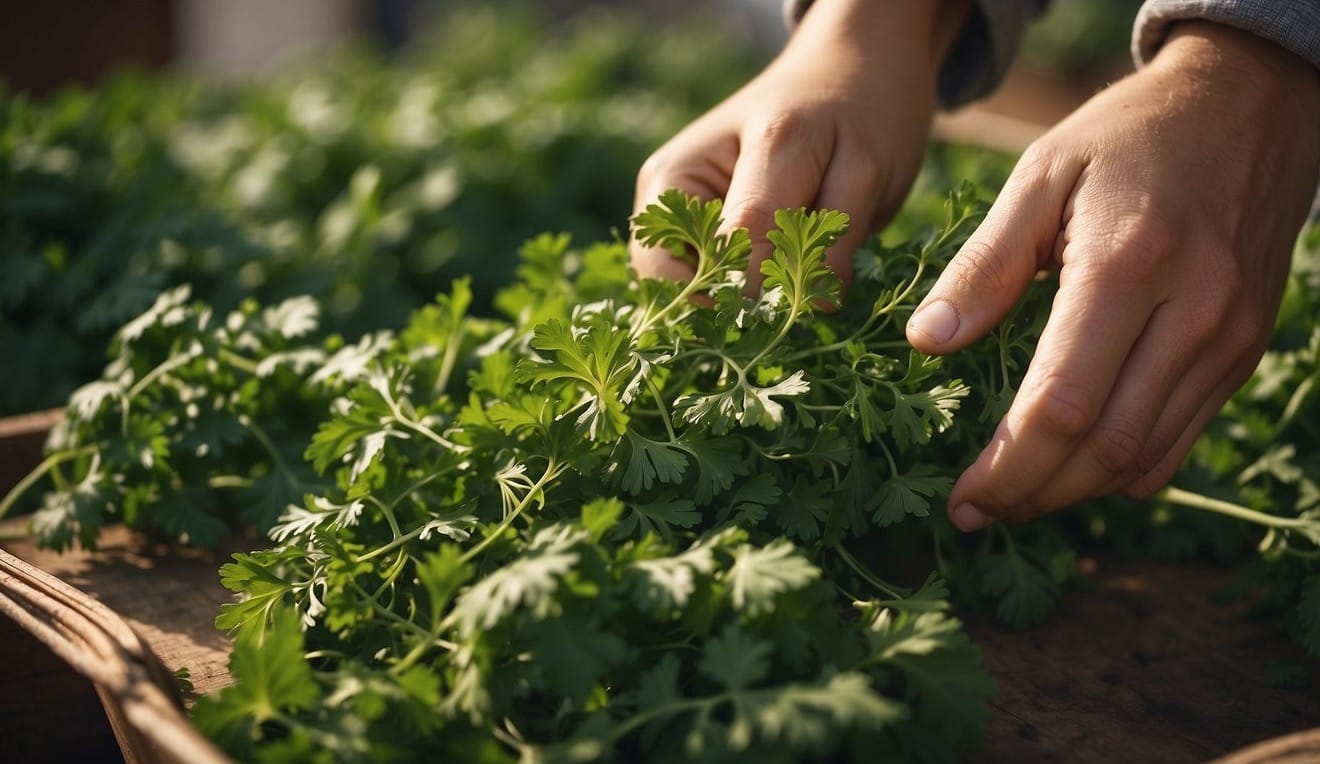
When and How to Harvest
Parsley is ready for harvest when the leaf stems have three segments. This typically occurs 70-90 days after planting. To harvest, grasp the leaf stalks and cut them off just above the soil line using kitchen shears. This method encourages new growth and produces healthy plants.
- Timing: Harvest parsley early in the morning when the essential oils are strongest.
- Frequency: Regular harvesting promotes new growth. Clips leaves as needed.
Drying and Storage
Dried parsley stores well and maintains flavor for cooking needs. To dry parsley:
- Wash the leaves and pat them dry.
- Lay the leaves out in a single layer on a drying rack.
- Place the rack in a warm, airy spot out of direct sunlight.
Drying takes a few days; leaves should be crumbly to the touch when ready. Store dried parsley in an airtight containerto keep it fresh. Fresh parsley can be kept in the refrigerator with the stems in water. To freeze parsley, chop it and mix with a little water or oil, spoon into ice cube trays and freeze. Transfer frozen cubes to a freezer-safe bag for long-term storage.
Troubleshooting Common Issues
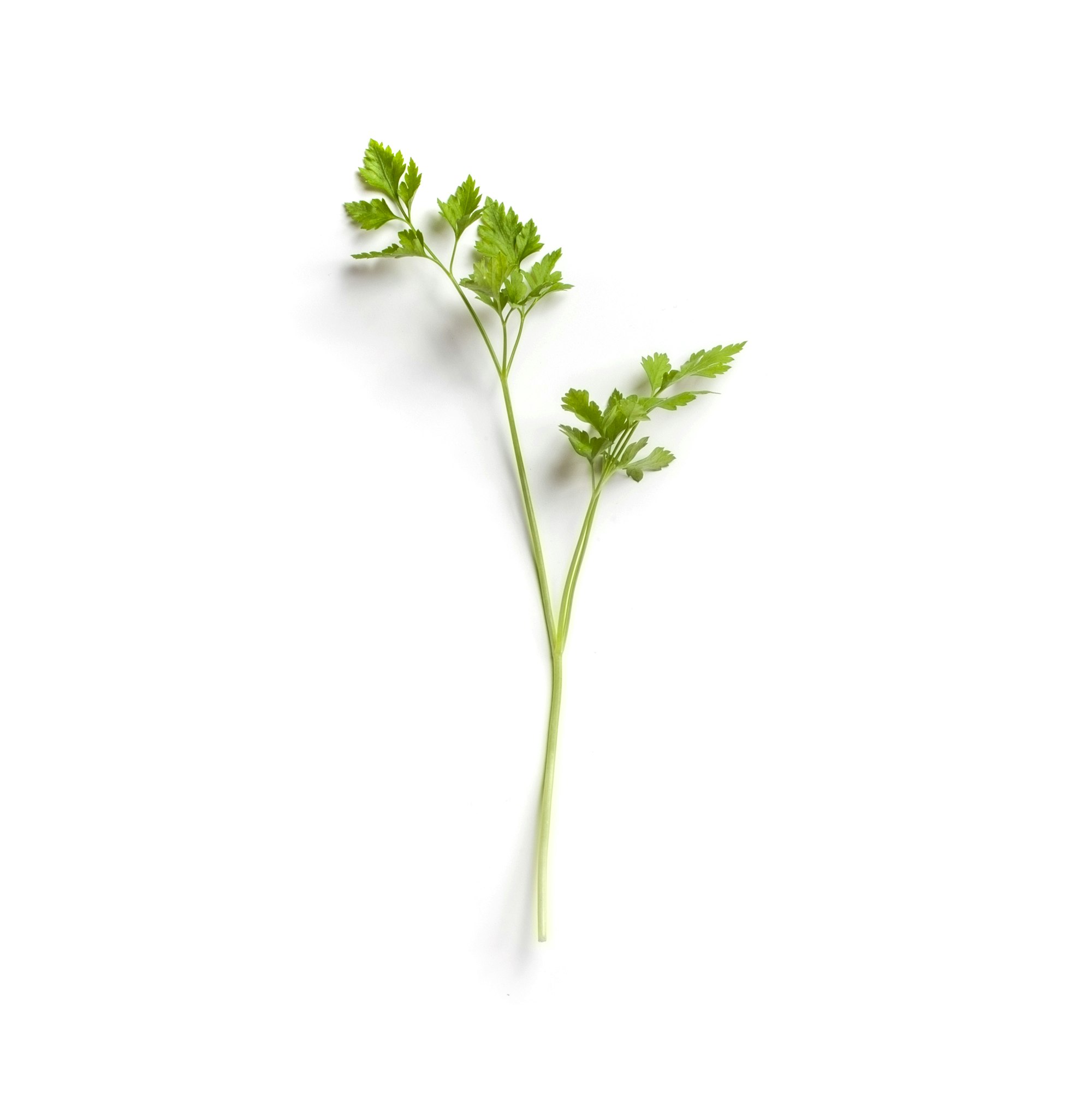
Growing parsley can be quite rewarding when you know how to handle the challenges that come with it. It's crucial to identify and address concerns like diseases and plant stress early to ensure your parsley thrives.
Dealing With Disease
The health of your parsley can be compromised by a few common diseases:
- Leaf Spot: This is often indicated by yellow spots that appear on leaves and turn to brown with a yellowish edge. It's caused by the Septoria fungus. To manage leaf spot:
- Remove affected leaves.
- Avoid overhead watering to keep foliage dry.
- Provide good air circulation around the plants.
- Root Rot: If your parsley's leaves are turning yellow or the plant looks wilted despite proper watering, root rot could be the issue. This often results from overwatering or poor drainage. To combat root rot:
- Let the soil dry out before watering again.
- Trim away any blackened, decaying roots.
- Improve soil drainage or consider repotting your plant.
Managing Plant Stress
Parsley plants can experience stress due to environmental factors:
- Temperature and Frost: Parsley prefers cooler temperatures and can be sensitive to extreme heat or frost. To protect your parsley:
- Move container-grown parsley indoors in extreme weather.
- Use frost covers to protect outdoor plants.
- Bitter and Tough Leaves: If your parsley tastes bitter or the leaves become tough, it could be due to high temperatures or the plant maturing and preparing to flower. To maintain tender, flavorful leaves:
- Harvest leaves regularly before the plant flowers.
- Provide some afternoon shade during the hottest part of the day.
- Humidity and Watering: Maintain consistent moisture levels without overwatering, as too much moisture can lead to disease and stress. During the winter, indoor parsley requires less water. Check the soil moisture by feeling it with your finger; water only when the top inch feels dry.
Frequently Asked Questions
Parsley is a versatile herb that you can grow both indoors and outdoors. Whether you're starting from cuttings or seeds, certain practices will help ensure successful growth and harvest.
What is the best method for growing parsley indoors?
To grow parsley indoors, use a deep pot with potting soil and place it in a spot that receives at least five hours of sunlight daily. Make sure the soil stays consistently moist, and use a pot with good drainage to avoid waterlogging.
Can you grow parsley from cuttings, and if so, how?
Yes, you can grow parsley from cuttings. Cut a 4-6 inch stem from an existing plant, remove the lower leaves, and place the stem in a glass of water. Once roots appear, transplant it into a pot with soil.
What are the necessary conditions for growing parsley from seed?
Growing parsley from seed requires soaking the seeds overnight to soften the coat. Plant them 1/4 inch deep in fertile, well-drained soil. Keep the soil moist to encourage sprouting and thin seedlings to 6-10 inches apart once they grow.
After harvesting, will parsley grow back the following year?
Parsley can regrow after cutting, especially during its first year. To ensure regrowth, avoid cutting the entire plant, and leave some leaves for photosynthesis.
What are the optimum growing temperatures for parsley?
Parsley grows best in temperatures ranging from 70-85°F (21-29°C). However, it can tolerate a mild frost and temperatures as low as 50°F (10°C).
Is it possible to grow parsley in water, and what are the required steps?
While not common, parsley can be grown in water as long as you provide ample light and nutrients.
Start with a cutting, let it root in water, and then transfer it to a hydroponic system with a nutrient solution.



